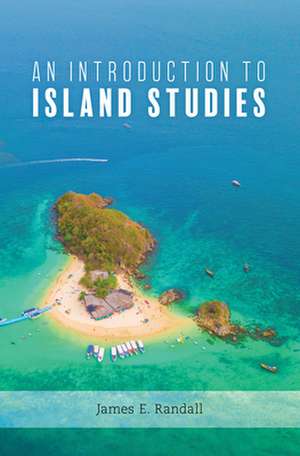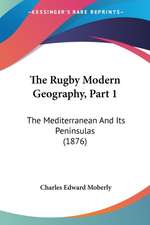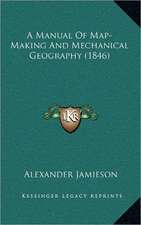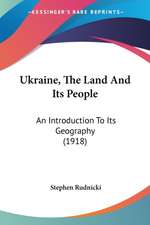INTRODUCTION TO ISLAND STUDIESCB
Autor James Randallen Limba Engleză Hardback – 18 oct 2020
Preț: 780.83 lei
Preț vechi: 1069.64 lei
-27% Nou
Puncte Express: 1171
Preț estimativ în valută:
149.41€ • 155.69$ • 123.71£
149.41€ • 155.69$ • 123.71£
Carte tipărită la comandă
Livrare economică 03-17 aprilie
Preluare comenzi: 021 569.72.76
Specificații
ISBN-13: 9781786615459
ISBN-10: 1786615452
Pagini: 256
Dimensiuni: 178 x 254 x 25 mm
Greutate: 0.74 kg
Editura: Rowman & Littlefield
ISBN-10: 1786615452
Pagini: 256
Dimensiuni: 178 x 254 x 25 mm
Greutate: 0.74 kg
Editura: Rowman & Littlefield
Cuprins
Detailed TOC
Chapter One: Introduction
This chapter describes the purpose and the motivation for the book, and situates the ensuing discussion within the overarching dichotomies described above.
Themes Boundaries and Limitations to this Study of Islands Outline of Chapters
Chapter 2: Definitions and Classifications of Islands
In this chapter we introduce students to complexities of island definitions and classifications. For example, how do functional and perceptual definitions of islands differ from what you might find listed under the word `island¿ in a dictionary? What is the difference between a continent and an island, or is there any difference? The word `island¿ itself has been used metaphorically in so many odd and unusual ways, as in `a heat island¿ or `a traffic island¿ or `an island in a kitchen¿. What do these and other appropriations of the word island tell us about our shared understanding of islands? We also review several of the common typologies or classifications of islands, as seen through the lenses of such disciplines as geomorphology, political science and international relations.
2.1. Definitions of the Term `Island¿
2.1.1. Dictionary Definitions
2.1.2. Historical and Linguistic Definitions
2.1.3. The Island as Metaphor
2.1.4. Functional Definitions
2.2. When is an Island a Continent, Archipelago, Atoll, Islet, Cay or Reef?
2.3. Artificial or Anthropogenic Islands
2.4. Classifications of Islands
2.4.1. Oceanic and Continental Islands
2.4.2. A Political Classification
2.4.3. Other Important Terms
Chapter 3: Physical Processes and Islands (provided as a sample chapter)
Much has been written about the physical processes that have formed islands, from subduction and the movement of the Earth¿s tectonic plates, to volcanic upheaval and the deposition of riverine alluvial sediments. In this chapter we examine the physical processes that have created and modified the islands of the world. In addition to geomorphological processes, the evolution of island flora and fauna is one of the most fascinating aspects of island studies. Island locations offer some of the best examples of endemism and species biodiversity and, as such, are a cultural and economic treasure trove for islanders and the larger global society. Whether from the perspective of Charles Darwin¿s analysis of finches on the Galápagos Islands or Alfred Wallace¿s description of species differentiation across the islands of Southeast Asia, the examination of island biogeography has important implications for the evolution of the human species and life on our planet. This chapter also examines the climatology of islands, from the microclimates that create lush rainforests just a short distance from desert-like regions to the longer-term impacts of climate change on islands.
3.1. The Formation and Structure of Islands
3.2. The Evolution of Island Flora and Fauna
3.2.1. Endemism, Biogeography and Biodiversity
3.3. Islands, Microclimates and Climate Change
Chapter 4: Images of Islands from Literature and the Popular Media
Our popular images and stereotypes of islands have been created across a variety of media, from the sagas told by returning European explorers and merchants, to children¿s adventure stories, to literature and poetry, cinema, television, music and even advertising. Here, we study these multiple forms of popular expression of islands, from the perspective of how they have shaped the images of islands and islanders and how these representations have influenced how islanders see themselves.
4.1. Islands in Literature and Poetry
4.1.1. Historical Literature and European Exploration
4.1.2. Islands and Twentieth Century Literature
4.1.3 Islands as Represented in Poetry
4.2. The Music of Islands
4.3. Islands in Cinema, Television and Advertising
Chapter 5: The Settling of Islands and Indigenous ¿ Outsider Interactions
It may be a truism to state that all inhabited islands have been settled at some point in history, or prehistory, by immigrants. This chapter traces the settling of islands, from the indigenous peoples to the interactions between indigenous island societies and non-indigenous societies. The islander-outsider relationship is one that has spanned thousands of years. Historic examples of these relationships and the perceptions that have been generated by islander and non-islander interactions will help us to better understand the current social, economic and political life of islanders.
5.1. Pre-Historical Human Settlement of Islands ¿ Two Case Studies:
5.1.1. Oceania and the Polynesians
5.1.2. North Atlantic and the Vikings
5.2. Islander and European Encounters ¿ Explorers, Missionaries and Merchants
Chapter 6: Islands, Islandness and Culture
The more recent relationships between islanders and mainlanders form a part of Chapter 6. The concept of islandness, not to be confused with insularity, is one of the most prominent and significant terms in island studies. This chapter provides a comprehensive discussion of the interpretations and applications of islandness, primarily from the perspective of islanders but also from those who have not been raised in island environments.
6.1. Islandness
6.2. Homogeneity and Heterogeneity on Islands
6.3. Islander ¿ Outsider Relationships in the Twentieth Century
Chapter 7: Geopolitics and Island Governance
In spite of an assumed and imputed association with marginalisation, many islands had, and continue to hold, a prominent political place in the world. In this chapter, we describe the geopolitical roles played by the world¿s islands and the level of power and autonomy they may or may not exercise. Over the past sixty years, and at least partly as a function of the creation of many more sovereign island states, the recognition of exclusive economic zones extending from coastlines and the consequences of climate change, islands increasingly find themselves at the centre of important international relations questions. This chapter discusses the importance of these trends and the more recent phenomenon for some islands, referred to as subnational island jurisdictions (SNIJs), to eschew nationhood in favour of an ongoing ambiguous political and economic relationship with a larger `host¿ nation (e.g., the Falkland Islands or the British Virgin Islands). Internally, islanders have adopted a variety of governance systems that reflect their island circumstances. Chapter 7 describes these systems of governance and the roles that these have played in the ongoing political evolution of islands.
7.1. Classical and Modern Geopolitics as Applied to Islands
7.2. Islands and International Relations - Are Islands Powerless?
7.3. Contesting Islands and Island Offshore Territory
7.4. Governance on Islands
7.5. Island Political Collaboration
Chapter 8: Islands and the Movement of People
This chapter examines the roles that islands have played in the movement of people, both as recipients as well as sources of out-migration. Some of the most prominent cultural perceptions of islands are as disembarkation points for migrants and as sites for refugees. Therefore, this chapter examines islands as entry and exit points for humanity. It also looks at the exodus of populations from islands, the factors that have prompted these emigrations and the consequences of these diasporas, both for the islands themselves and for the displaced islanders.
8.1. Factors in Island Outmigration ¿ Three Case Studies:
8.1.1. Ireland
8.1.2. Cuba
8.1.3. Oceania
8.2. Islands as Way Stations for Refugees and Immigrants
8.3. The Role of Island Diasporas
8.4. A Culture of Migration and Remittances
8.5. Island Population Growth ¿ Two Case Studies:
8.5.1. Cayman Islands
8.5.2. Madagascar
Chapter 9: Island Health and Epidemiology
Islands have been at the forefront in the development of our knowledge regarding health, wellness and epidemiology. Everything from our understanding of the evolution of epidemics to the genetics of colour blindness has benefited from exploring island contexts. Chapter 9 describes the lessons that have been learned from an examination of population health on islands. Unfortunately, some island peoples also suffer from more severe health problems, including obesity and the consequences of obesity (such as diabetes). This chapter outlines some of the health challenges facing islanders and the role that the island context may have played in contributing to these health problems.
9.1. Population Health, Epidemiology and Islands
9.2. Health Issues on Islands
9.2.1. Obesity and Diabetes ¿ Special Island Health Challenges
Chapter 10: Economic Change, Development and Islands
Arguably the largest body of research on islands has been on the structure of their economies, economic change and development. This chapter looks at the economic fortunes of islands and islanders using several measures. The economies of some islands are almost entirely reliant on foreign aid and remittances while others, like off-shore financial centres, have sustained their economy based on their ability to negotiate relationships with other nations and organizations. Through a conceptual and empirical discussion, we examine the many mechanisms that islands have used to develop their economies.
10.1. Measures of Economic Wellbeing on Islands
10.2. Models of Island Economic Development
10.2.1. Resource Exploitation
10.2.2. The MIRAB Model
10.2.3. The PROFIT Model
10.3. Offshore Financial Centres ¿ A Case Study of Economic Development
10.4. Islands as Centres of Entrepreneurship
Chapter 11: Island Tourism
If the economy is one of the most prominent topics in island studies, then tourism may well be one of the most popular themes surrounding island economies. The stereotypical island as tropical paradise, framed by crystal blue waters, white sands and palm trees, may be one of the most well-known images projected by the travel industry. Islands in cold waters have also used tourism to shape their image and attract a share of the global tourism market. Chapter 11 examines the ways in which tourism has shaped many islands and island peoples, economically, politically, culturally and ecologically. Given the impacts being placed on island ecosystems and societies as a result of increasing numbers of world travelers, sustainable tourism is now emerging as a more important component of island tourism. This chapter discusses the role and potential for this model of island-based tourism.
11.1. Islands as Tourist Destinations
11.2. Motivations and Marketing ¿ The Portrayal of Islands for Tourism
11.3. Warm-Water and Cold-Water Island Tourism
11.4 The Impacts of Tourism on Islands
11.5. Sustainable Island Tourism
Chapter 12: Island Sustainability and Conclusions
Since it encompasses so many aspects of the issues discussed earlier, a broader discussion of sustainability forms the central theme for the last chapter of this book. While sustainability may be one of the most overused and misused terms in our modern languages, it is still a powerful tool to better understand the relationships between humans, the social and the natural environments. In this concluding chapter, island sustainability is discussed from both historical and current perspectives. Islands hold a special place in the world, for all those who have experienced island life, no matter how fleeting, as well as for those whose relationships with islands have been formed indirectly. Therefore, this concluding chapter will provide insights on the future of islands and island peoples. Throughout the book, and especially in this concluding chapter, the many examples and concepts are woven together using the three central dichotomies of vulnerability/resilience, isolation/connectedness and diversity/cohesion.
12.1. Sustainability, Sustainable Development and Growth
12.2. The Impacts of Human Activity on Islands:
12.2.1. Historical
12.2.2. Recent
12.3. Future Role of Islands
12.4. Revisiting the Themes
Chapter One: Introduction
This chapter describes the purpose and the motivation for the book, and situates the ensuing discussion within the overarching dichotomies described above.
- Vulnerability and Resilience
- Isolation and Connectedness
- Diversity and Cohesion
Chapter 2: Definitions and Classifications of Islands
In this chapter we introduce students to complexities of island definitions and classifications. For example, how do functional and perceptual definitions of islands differ from what you might find listed under the word `island¿ in a dictionary? What is the difference between a continent and an island, or is there any difference? The word `island¿ itself has been used metaphorically in so many odd and unusual ways, as in `a heat island¿ or `a traffic island¿ or `an island in a kitchen¿. What do these and other appropriations of the word island tell us about our shared understanding of islands? We also review several of the common typologies or classifications of islands, as seen through the lenses of such disciplines as geomorphology, political science and international relations.
2.1. Definitions of the Term `Island¿
2.1.1. Dictionary Definitions
2.1.2. Historical and Linguistic Definitions
2.1.3. The Island as Metaphor
2.1.4. Functional Definitions
2.2. When is an Island a Continent, Archipelago, Atoll, Islet, Cay or Reef?
2.3. Artificial or Anthropogenic Islands
2.4. Classifications of Islands
2.4.1. Oceanic and Continental Islands
2.4.2. A Political Classification
2.4.3. Other Important Terms
Chapter 3: Physical Processes and Islands (provided as a sample chapter)
Much has been written about the physical processes that have formed islands, from subduction and the movement of the Earth¿s tectonic plates, to volcanic upheaval and the deposition of riverine alluvial sediments. In this chapter we examine the physical processes that have created and modified the islands of the world. In addition to geomorphological processes, the evolution of island flora and fauna is one of the most fascinating aspects of island studies. Island locations offer some of the best examples of endemism and species biodiversity and, as such, are a cultural and economic treasure trove for islanders and the larger global society. Whether from the perspective of Charles Darwin¿s analysis of finches on the Galápagos Islands or Alfred Wallace¿s description of species differentiation across the islands of Southeast Asia, the examination of island biogeography has important implications for the evolution of the human species and life on our planet. This chapter also examines the climatology of islands, from the microclimates that create lush rainforests just a short distance from desert-like regions to the longer-term impacts of climate change on islands.
3.1. The Formation and Structure of Islands
3.2. The Evolution of Island Flora and Fauna
3.2.1. Endemism, Biogeography and Biodiversity
3.3. Islands, Microclimates and Climate Change
Chapter 4: Images of Islands from Literature and the Popular Media
Our popular images and stereotypes of islands have been created across a variety of media, from the sagas told by returning European explorers and merchants, to children¿s adventure stories, to literature and poetry, cinema, television, music and even advertising. Here, we study these multiple forms of popular expression of islands, from the perspective of how they have shaped the images of islands and islanders and how these representations have influenced how islanders see themselves.
4.1. Islands in Literature and Poetry
4.1.1. Historical Literature and European Exploration
4.1.2. Islands and Twentieth Century Literature
4.1.3 Islands as Represented in Poetry
4.2. The Music of Islands
4.3. Islands in Cinema, Television and Advertising
Chapter 5: The Settling of Islands and Indigenous ¿ Outsider Interactions
It may be a truism to state that all inhabited islands have been settled at some point in history, or prehistory, by immigrants. This chapter traces the settling of islands, from the indigenous peoples to the interactions between indigenous island societies and non-indigenous societies. The islander-outsider relationship is one that has spanned thousands of years. Historic examples of these relationships and the perceptions that have been generated by islander and non-islander interactions will help us to better understand the current social, economic and political life of islanders.
5.1. Pre-Historical Human Settlement of Islands ¿ Two Case Studies:
5.1.1. Oceania and the Polynesians
5.1.2. North Atlantic and the Vikings
5.2. Islander and European Encounters ¿ Explorers, Missionaries and Merchants
Chapter 6: Islands, Islandness and Culture
The more recent relationships between islanders and mainlanders form a part of Chapter 6. The concept of islandness, not to be confused with insularity, is one of the most prominent and significant terms in island studies. This chapter provides a comprehensive discussion of the interpretations and applications of islandness, primarily from the perspective of islanders but also from those who have not been raised in island environments.
6.1. Islandness
6.2. Homogeneity and Heterogeneity on Islands
6.3. Islander ¿ Outsider Relationships in the Twentieth Century
Chapter 7: Geopolitics and Island Governance
In spite of an assumed and imputed association with marginalisation, many islands had, and continue to hold, a prominent political place in the world. In this chapter, we describe the geopolitical roles played by the world¿s islands and the level of power and autonomy they may or may not exercise. Over the past sixty years, and at least partly as a function of the creation of many more sovereign island states, the recognition of exclusive economic zones extending from coastlines and the consequences of climate change, islands increasingly find themselves at the centre of important international relations questions. This chapter discusses the importance of these trends and the more recent phenomenon for some islands, referred to as subnational island jurisdictions (SNIJs), to eschew nationhood in favour of an ongoing ambiguous political and economic relationship with a larger `host¿ nation (e.g., the Falkland Islands or the British Virgin Islands). Internally, islanders have adopted a variety of governance systems that reflect their island circumstances. Chapter 7 describes these systems of governance and the roles that these have played in the ongoing political evolution of islands.
7.1. Classical and Modern Geopolitics as Applied to Islands
7.2. Islands and International Relations - Are Islands Powerless?
7.3. Contesting Islands and Island Offshore Territory
7.4. Governance on Islands
7.5. Island Political Collaboration
Chapter 8: Islands and the Movement of People
This chapter examines the roles that islands have played in the movement of people, both as recipients as well as sources of out-migration. Some of the most prominent cultural perceptions of islands are as disembarkation points for migrants and as sites for refugees. Therefore, this chapter examines islands as entry and exit points for humanity. It also looks at the exodus of populations from islands, the factors that have prompted these emigrations and the consequences of these diasporas, both for the islands themselves and for the displaced islanders.
8.1. Factors in Island Outmigration ¿ Three Case Studies:
8.1.1. Ireland
8.1.2. Cuba
8.1.3. Oceania
8.2. Islands as Way Stations for Refugees and Immigrants
8.3. The Role of Island Diasporas
8.4. A Culture of Migration and Remittances
8.5. Island Population Growth ¿ Two Case Studies:
8.5.1. Cayman Islands
8.5.2. Madagascar
Chapter 9: Island Health and Epidemiology
Islands have been at the forefront in the development of our knowledge regarding health, wellness and epidemiology. Everything from our understanding of the evolution of epidemics to the genetics of colour blindness has benefited from exploring island contexts. Chapter 9 describes the lessons that have been learned from an examination of population health on islands. Unfortunately, some island peoples also suffer from more severe health problems, including obesity and the consequences of obesity (such as diabetes). This chapter outlines some of the health challenges facing islanders and the role that the island context may have played in contributing to these health problems.
9.1. Population Health, Epidemiology and Islands
9.2. Health Issues on Islands
9.2.1. Obesity and Diabetes ¿ Special Island Health Challenges
Chapter 10: Economic Change, Development and Islands
Arguably the largest body of research on islands has been on the structure of their economies, economic change and development. This chapter looks at the economic fortunes of islands and islanders using several measures. The economies of some islands are almost entirely reliant on foreign aid and remittances while others, like off-shore financial centres, have sustained their economy based on their ability to negotiate relationships with other nations and organizations. Through a conceptual and empirical discussion, we examine the many mechanisms that islands have used to develop their economies.
10.1. Measures of Economic Wellbeing on Islands
10.2. Models of Island Economic Development
10.2.1. Resource Exploitation
10.2.2. The MIRAB Model
10.2.3. The PROFIT Model
10.3. Offshore Financial Centres ¿ A Case Study of Economic Development
10.4. Islands as Centres of Entrepreneurship
Chapter 11: Island Tourism
If the economy is one of the most prominent topics in island studies, then tourism may well be one of the most popular themes surrounding island economies. The stereotypical island as tropical paradise, framed by crystal blue waters, white sands and palm trees, may be one of the most well-known images projected by the travel industry. Islands in cold waters have also used tourism to shape their image and attract a share of the global tourism market. Chapter 11 examines the ways in which tourism has shaped many islands and island peoples, economically, politically, culturally and ecologically. Given the impacts being placed on island ecosystems and societies as a result of increasing numbers of world travelers, sustainable tourism is now emerging as a more important component of island tourism. This chapter discusses the role and potential for this model of island-based tourism.
11.1. Islands as Tourist Destinations
11.2. Motivations and Marketing ¿ The Portrayal of Islands for Tourism
11.3. Warm-Water and Cold-Water Island Tourism
11.4 The Impacts of Tourism on Islands
11.5. Sustainable Island Tourism
Chapter 12: Island Sustainability and Conclusions
Since it encompasses so many aspects of the issues discussed earlier, a broader discussion of sustainability forms the central theme for the last chapter of this book. While sustainability may be one of the most overused and misused terms in our modern languages, it is still a powerful tool to better understand the relationships between humans, the social and the natural environments. In this concluding chapter, island sustainability is discussed from both historical and current perspectives. Islands hold a special place in the world, for all those who have experienced island life, no matter how fleeting, as well as for those whose relationships with islands have been formed indirectly. Therefore, this concluding chapter will provide insights on the future of islands and island peoples. Throughout the book, and especially in this concluding chapter, the many examples and concepts are woven together using the three central dichotomies of vulnerability/resilience, isolation/connectedness and diversity/cohesion.
12.1. Sustainability, Sustainable Development and Growth
12.2. The Impacts of Human Activity on Islands:
12.2.1. Historical
12.2.2. Recent
12.3. Future Role of Islands
12.4. Revisiting the Themes




























